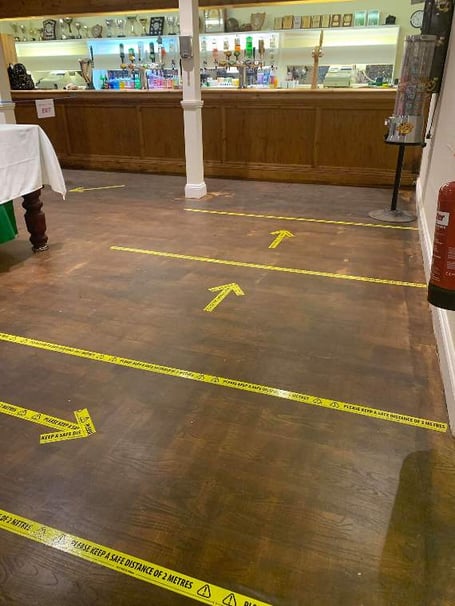August 1 marked the tentative return of non-league football, 141 days from its suspension on Friday, March 13. Whilst the 2020/21 season hasn’t begun, its pre-season has, behind closed doors at least, so is this a cause for celebration or will it prove to be a false dawn?
Clubs at Steps 5 and 6, the level of the Non-League pyramid occupied by the Toolstation Western League, can begin their League season from Saturday, September 5, ahead of the Southern League, which is set to start on September 19. However, Leagues at this level have become increasingly reticent about publishing their fixtures, with the Ebac Northern League stating that their season will only begin when “spectators are allowed to attend matches” and their fixture list will only be released “once the issue of spectators is resolved nationally”.
Whilst optimism about fans return has been growing within the game in recent weeks, the news that pilot events at cricket, horse racing and snooker had been postponed on July 31 sent shockwaves across the non-league pyramid. A spike in Coronavirus cases has set the Governments unlocking timetable back by at least two weeks. In Blackburn with Darwen, social media reports indicated that Clubs have been told to stop contact training and not to play friendlies.
Given the Prime Ministers statement on Friday, football at every level is facing the very real prospect that its return will be delayed, in spite of the FA’s announcement that its own Cup competitions are scheduled to kick off at the start of September.
Indeed, Friday’s announcement has also served to change the tone of footballs conservation within itself about what constitutes a safe return. The Football Association’s position is that: “A return to competitive football should only happen once clubs and facility providers have completed the necessary risk assessments and comprehensive plans are in place.” Inevitably, this has prompted much debate as to how the FA’s guidance should be interpreted. What is required as opposed to advised.
Whilst the Head of the National League System, Laurence Jones, made it clear in a letter sent to Western League Clubs on July 18, that any pre-season fixture must be played behind closed doors, the door was left open for Somerset County League sides to play in front of “socially distanced” spectators. That door was closed on August 4 when Mr Jones issued a further letter extending the behind closed doors ban to the NLS Feeder Leagues, what the FA refer to as the “Grassroots” of the game.
The other loophole, concerning the legal status of football clubhouses has also been addressed by the FA. As a licenced premise, football clubhouses are subject to the same regulation as pubs and restaurants, but the FA have clarified that “there should be no entry to the ground for spectators” from such venues. The fact that the FA have been forced to issue such a statement after only one weekend of friendly matches, highlights a fundamental weakness with their own communication strategy.
Had the Prime Minster chosen not to “squeeze the brake” on unlocking Britain, Clubs would have undoubtedly looked to those choosing a more “liberal” interpretation of the guidance as the benchmark. But that is no longer the case and social media references to bars being open for Saturday afternoon matches, have been replaced by explicit announcements that fans are not allowed to enter grounds to watch games.
The initial optimism was undoubtedly fuelled by the notion that whatever guidance had been put into place, football would largely be left to police itself when it came to monitoring Covid-19 compliance. Neither the Leagues or the County FA’s have the resources to ensure anything more than a Risk Assessment has been published, whilst guidance provided to Match Officials clearly states that “Referees are not responsible for clubs, players or spectators complying with The FA
guidance. The home club and their Covid-19 officer have responsibility for managing these matters to the best of their ability”.
As the rest of the country began to re-open, the momentum to get us back playing had become almost irresistible, until Boris put the brakes on. Now the narrative is very different, with local lockdowns and coronavirus cases on the rise.
As it stands, Western League Clubs selected to play at the start of this seasons FA Cup competitions will do so without fans in the ground. Presumably, those not willing to make this sacrifice will forfeit their place in the competition. The FA may believe that non-league football at the Western League level will start on September 5, but with evidence that Leagues are withholding fixtures until Government provides clarity around the spectator situation, this is looking increasingly unlikely.
Most worrying of all is the prospect of a second Coronavirus wave, which has clearly fuelled Government policy in Bradford, Manchester and Leicester. If local lockdowns continue to be enforced this will have obvious repercussions on Leagues abilities to carry out their fixture schedules and then there is the Great British weather!
Last season, the Western League First Division, where Welton Rovers and Radstock Town play their football, had completed two thirds of its fixtures when the Coronavirus pulled the plug on the League campaign. Yet the Southern Counties East League First Division, which plays its football at the same step of the non-league pyramid had completed 79 per cent of their fixtures, meaning their teams had almost half as many matches outstanding as their Western League counterparts. This discrepancy was not caused by the Coronavirus, rather it was a result of a particularly bad winter for the South West of England.
Local lockdowns, a second wave, fans in grounds and the Great British weather. These are the challenges facing the restart of non-league football. Yet arguably the greatest challenge the Western League will face this season is not when it will start, but when it will finish. In his July letter to Non- League Clubs, the Head of the National League System clearly stated that the league season will end no later than Saturday, May 15. In recent seasons it has been the FA’s intransigence around this end date that has proved so problematic for Leagues, particularly at the base of the pyramid, sometimes requiring Clubs to play on consecutive days in order to meet the deadline.
If Coronavirus has taught the football family anything its that we really are all in this together. If there can flexibility at the start of the season, particularly when it comes to getting fans into grounds, then why can’t there be the same flexibility at the end of the season? Telling Leagues at the base of the pyramid that they must conclude their matches by a specific date, come Hell or High Water, is challenging enough, but when you are faced with Hell AND High Water, it feels particularly unfair.
Our photo shows Covid-19 preparations at Radstock Town.





Comments
This article has no comments yet. Be the first to leave a comment.